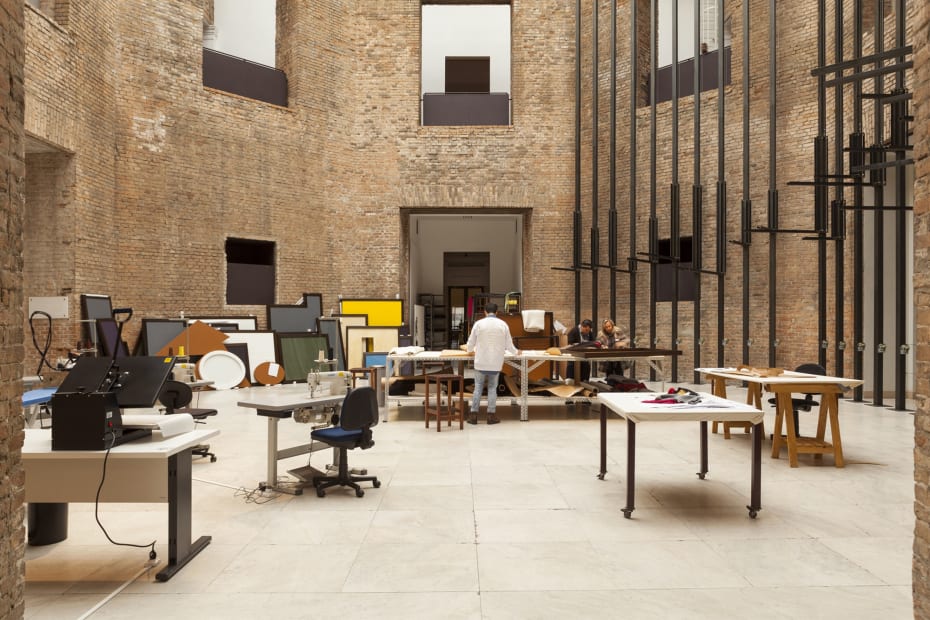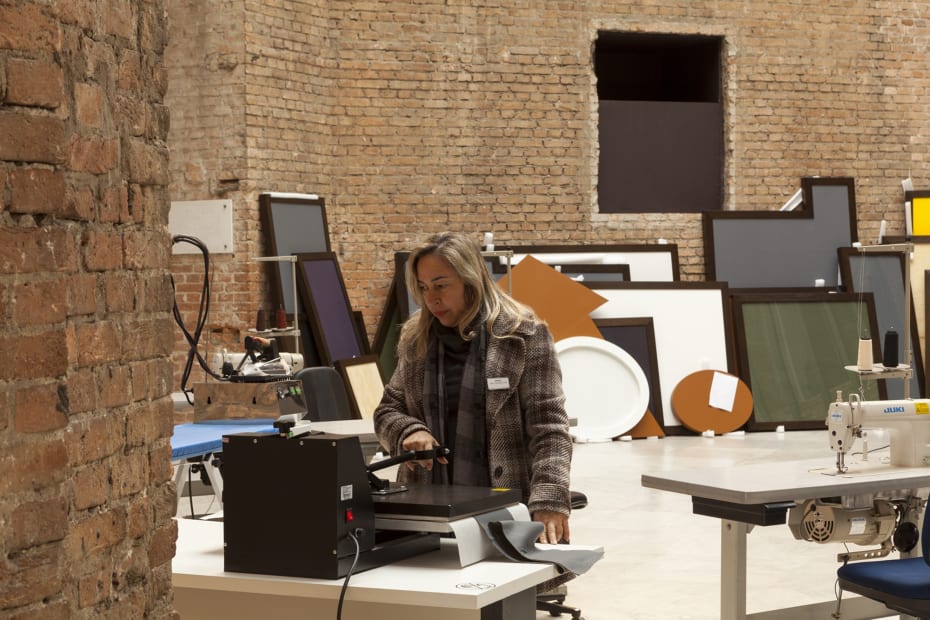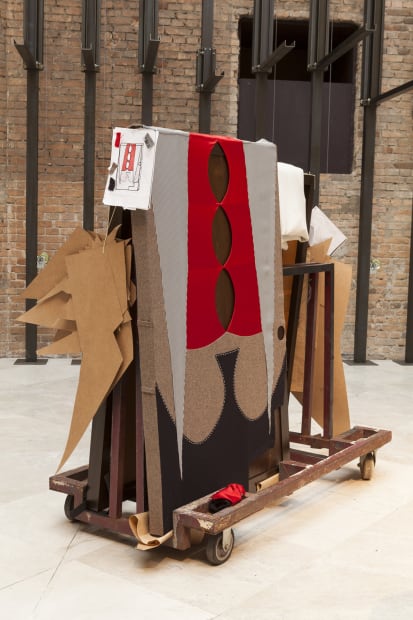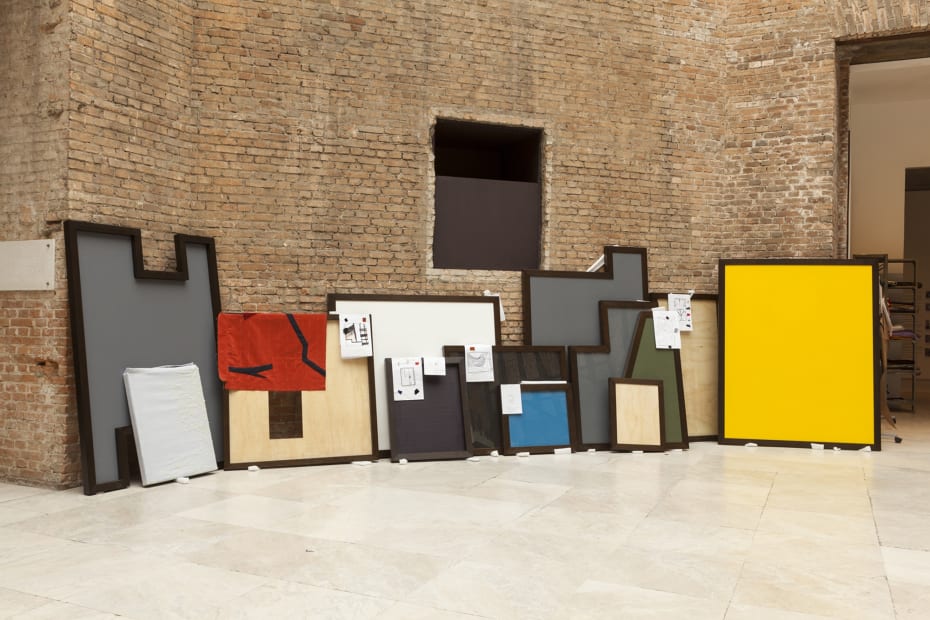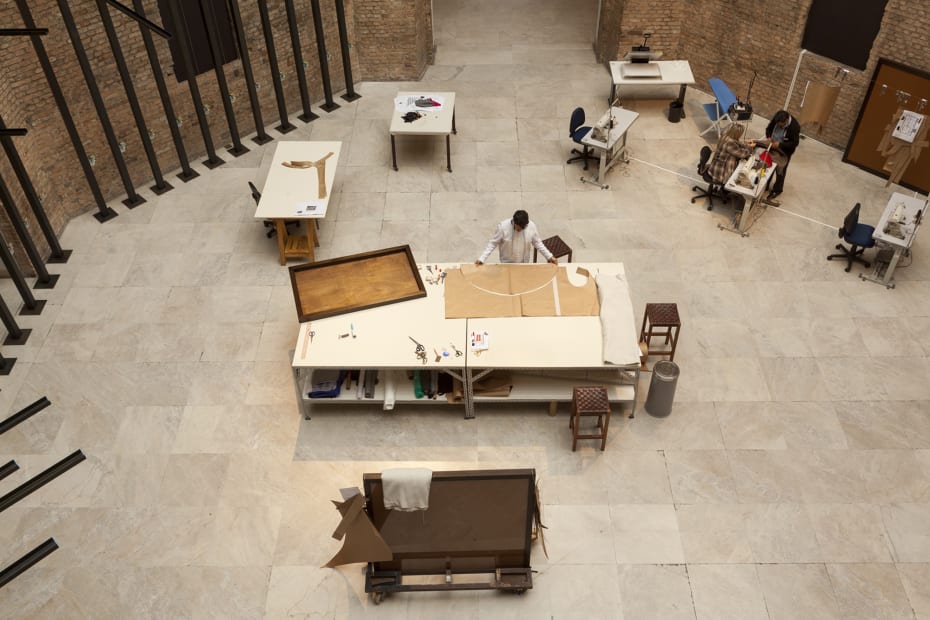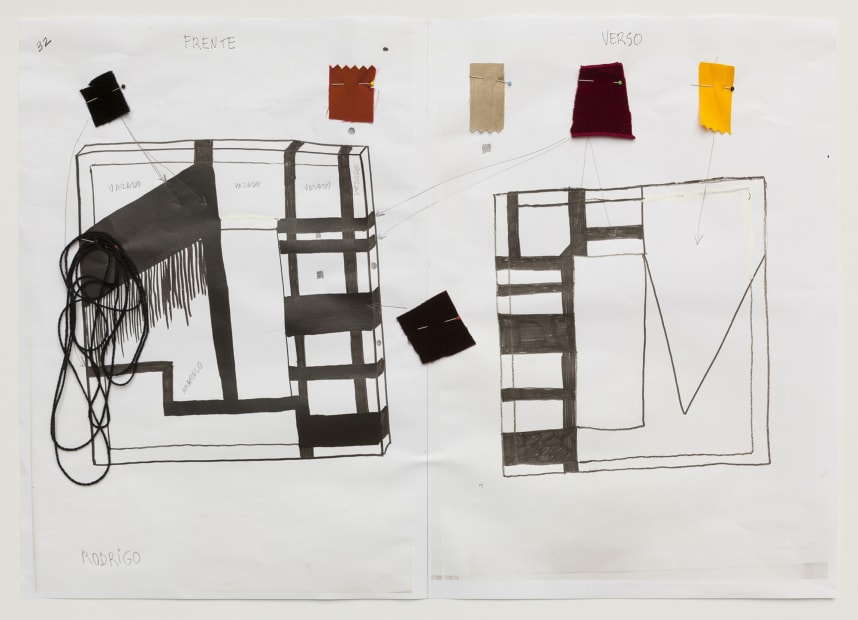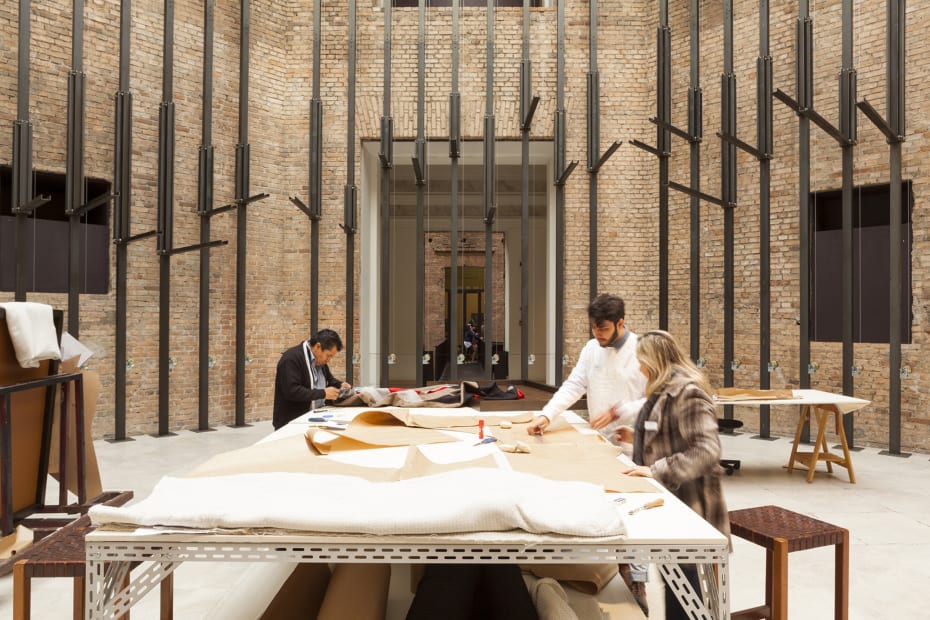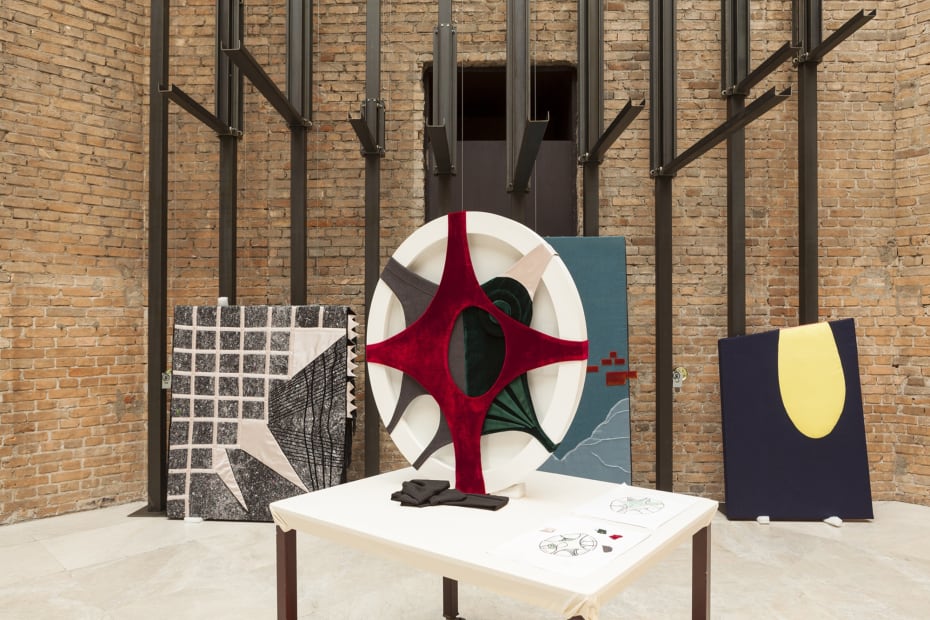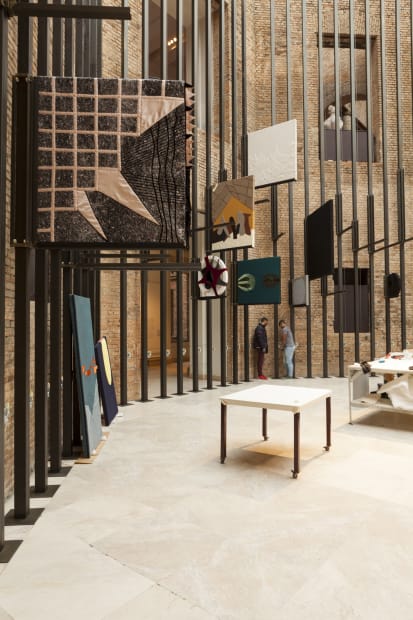Laura Lima: Tailor Shop: Pinacoteca, São Paulo
The Pinacoteca de São Paulo, a museum of the São Paulo State Secretariat for Culture, presents from July 7 to October 8, 2018, the exhibition Laura Lima: Alfaiataria [Laura Lima: Tailor’s Shop], which occupies the Octagon Space on the first floor of the Pina Luz building. Laura Lima (1971, Governador Valadares) creates an innovative dialogue with the museum practice by presenting a fully-functional tailoring workshop complete with workers, fabrics and textile materials, trimmings, and the various pieces of equipment used in a clothing factory.
In the workshop, a team of real-life tailors and seamstresses will work everyday throughout the exhibition period. They will produce a collection of garments made over empty frames, creating portraits that interpret the artist’s ideas and designs based on their own experiences and knowledge. The space will be activated by the presence of these professionals and their activities – modeling, cutting, basting, sewing, pressing, finalizing – and, throughout the exhibition period, the public will witness the emergence of these pieces, which will be stored in a technical reserve suspended in the Octagon, especially built for the project. It is expected that approximately 30 works will have been produced by the end of the exhibition.
By setting up a working space with real people in the center of the Pinacoteca, Laura Lima removes the emphasis given to art objects within the space of the museum to focus on everyday events and experiences. According to curator Fernanda Pitta, “Lima refuses to call her works performance works. For the artist, the focus does not lie on underscoring (these particular) subjects or the subjectivity of their actions, but on regarding the participants (whom she calls viventes, or “livers”) of the everyday experience also as the matter of a work of art per se, occupying the space along with and in the same way as the objects, the furniture and the actual architecture.
In Tailor’s Shop, by turning to a traditional, specialized and highly elaborate making process such as that of tailors and seamstresses, Lima also proposes a parallelism with the art-making process and a reflection about the time and value of work. The work dialogues with the space and the history of the Pinacoteca, as it installs a workshop in a building that originally fulfilled this function, once it was created to be the main building of the Liceu de Artes e Ofícios de São Paulo [Lyceum of Arts and Crafts of São Paulo]. It also enables a relationship to be established with the actual urban environment of the museum, with the Bom Retiro neighborhood and its tailoring workshop tradition, textile shops and clothing stores, and with the professionals from various communities, such as that of the Jewish, the Korean and the Bolivian people.
Lima’s artistic production addresses the complexity of individual and collective behaviors. Since the beginning of her trajectory, in 1990, the Minas Gerais-born artist makes use of living beings (human and animals) as part of her oeuvre. In her actions and sculptures, the art object is often activated for long uninterrupted periods. Her reference sources include art history and science fiction, and she employs techniques that range from intricate drawings and collages, to collaborations with artists and craftsmen who activate her work.
Tailorshop was first exhibited at the Bonnefanten Museum in Maastricht, the Netherlands, between 2014 and 2015, as part of the artist’s solo exhibition at the museum, during which she was contemplated with the prestigious 2014 Bonnefanten Award for Contemporary Art. Its conception at Pinacoteca counts on the support of the Escola de Alfaiataria.
